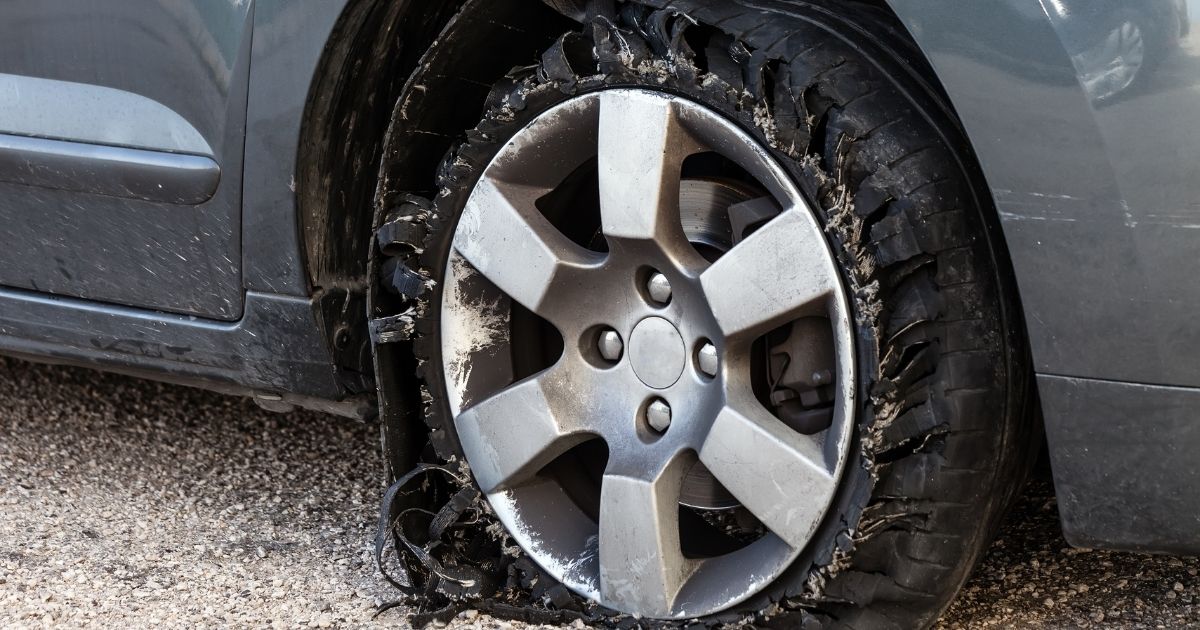What Should Drivers Know about Tire Blowouts?

Between increased driving and the climbing temperatures, summer carries an increased risk of tire blowouts. Although these are mostly associated with the chunks of treads left behind by large trucks, passenger cars can face blowouts with varying tire pressures, which can lead to major car accidents. Federal reports suggest over 10,000 accidents happen annually from tire blowouts, leading to about 200 deaths. These numbers have dropped substantially since 2003, when authorities mandated car manufacturers add tire pressure monitor systems (TPMS) into new vehicles. Half of these accidents are single-vehicle crashes. On vans and SUVs, tire blowouts can lead to rollover accidents.
Blowouts happen when pressure changes rapidly and drops. It can happen from potholes, large cuts in treads, punctures that leak air, or even an overloaded car that disrupts vehicle equilibrium. It usually comes with a loud, alarming pop that will unnerve most drivers. Front tire blowouts cause the car to pull toward the weakened wheel, whereas rear tire blowouts will manifest in the chassis and seats. They have become less common, as tire technology has improved, along with in-car technology that indicates when one of the four tires has less air pressure than the others.
In addition to the TPMS, there are things drivers can look for to prevent blowouts. Treads get worn down over time, so drivers should check on them consistently. Even if the tires are above the 1.6-millimeter legal threshold, they should be replaced if the driver is not comfortable. General wear and tear, such as along the tire walls, also should be examined carefully for potential issues. Motorists should try to listen for any leaks and look for anything impaled in the treads, such as a nail. Even if not indicated by a TPMS, if a tire looks low, air should be put in it. When tires are filled, they should be kept at the same air pressure levels, following the manufacturer’s guidelines.
Drivers who maintain their tires can avoid any potential liability issues. If a tire is damaged, even if minutely, it should be replaced as quickly as possible. Any prior damage or signs of compromised tire integrity on a car involved in an accident can be used against the driver in a lawsuit or insurance claim.
How to Handle a Blowout While Driving
The key to safely handling a tire blowout is remaining calm. The loud bang followed by the partial loss of control can be disorienting. The immediate reaction is to slam on the brakes, which can lead to accidents. Braking without grip from a tire is not a good idea. Here are some steps to safely handling a tire blowout on the road:
- Keep the steering wheel steady and avoid any sharp turns. Try to get to the shoulder on the side where the blowout happened.
- Slow down gradually and naturally. Decelerate by putting the car into a lower gear if possible.
- Once down to a safe speed, pull to the side of the road.
- Once on the side of the road or shoulder, attempt to replace the tire safely. Put on the emergency flashers and use safety cones or road flares, whatever is necessary. Call roadside assistance if possible.
Actions taken following a blowout will pertain to an insurance claim or liability if an accident occurs. Drivers should act with good judgment but act quickly if something happens. If the car does not have a spare tire, the motorist should call a tow truck or repair company to replace the tire or tow the car. The car should not be driven until the tire has been replaced and the car is working properly.
Washington DC Car Accident Lawyers at the Law Offices of Duane O. King can Assist with Tire Blowouts and Other Accidents
Tire blowouts can lead to severe accidents. If you are injured, getting the right help can mean a major difference in resolution. The Washington DC car accident lawyers at the Law Offices of Duane O. King have the experience and ability to quickly resolve claims and will fight to secure all the compensation you deserve. Call us at 202-331-1963 or contact us online for a free consultation. Located in Washington, DC, we work with car accident victims in Prince George’s County, including Laurel, Beltsville, Adelphi, College Park, Greenbelt, Mitchellville, Woodmore, Greater Upper Marlboro, Springdale, Largo, Bowie, Capitol Heights, District Heights, Forestville, Suitland, and Seat Pleasant, Clinton, Oxon Hill, Temple Hills, and Fort Washington.
